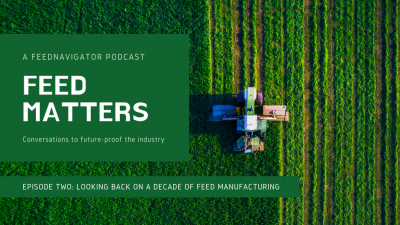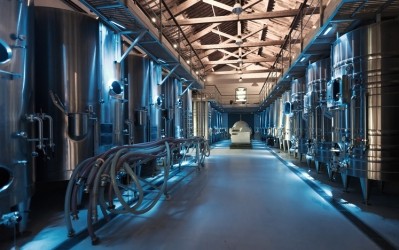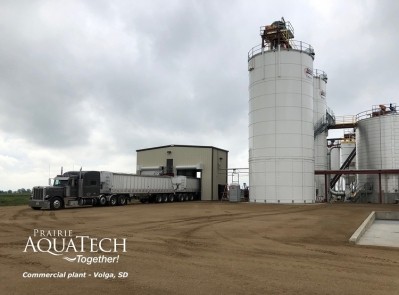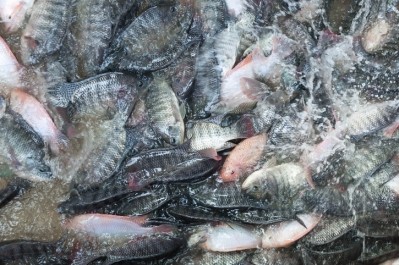Reports from IPPE
Alltech: Challenges, technology may alter regional feed production
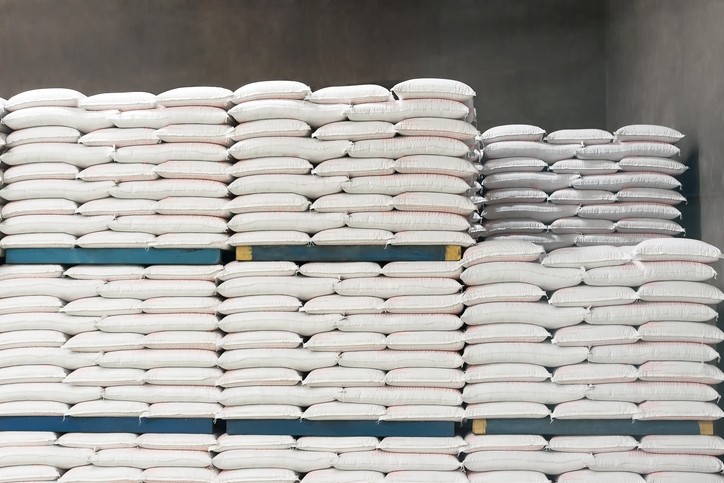
We sat down with Mark Lyons, Alltech president and CEO, at the International Production and Processing Expo (IPPE) in Atlanta to hear more about the role of feed efficiency, details informing the drop in broiler feed production in Brazil and the potential implications of aquaculture feed numbers in this year’s Global Feed Survey.
Alltech’s eighth annual survey looked at data from 144 countries and more than 30,000 feed mills, the company reported. The estimation is that the total production of feed increased by about 3% and that 1.103bn metric tons of animal feed were generated in 2018.
In addition to the increasing production of feed, feed efficiency also appears to be improving, said Lyons. There are “countries where total meat production is staying the same or growing and feed production is staying the same or going down,” he added.
“We can certainly see that as smaller producers [that] generally would have higher feed conversion ratios, as they exit, then obviously these more efficient systems dominate and less feed is required,” he said. “We can really see that the correlation is that global feed conversion ratio must be improving.”
As discussions regarding the interaction of agriculture and the environment continue, the market has started to respond, Lyons said. “It’s been amazing to see just in the last three years how many more companies are talking about sustainability in a meaningful way and how many are talking about lowering the impact that agriculture is having on the environment,” he added.
One facet of that discussion is feed conversion, he said.
“Every year it’s one or two points of feed conversion that’s improved and that’s coming from genetics, that’s coming from management, that’s coming from nutrition and it’s all of these aspects together to deliver that result,” he added in regards to results for poultry.
Brazil’s feed drop
Feed production for broiler chickens expanded in all regions, except Latin America where there was a slight decline, said Alltech.
Brazil is one of the top three feed producing countries in Latin America, however, it also contributed to the region’s 2% drop in broiler feed production, the company reported.
“The big one is Brazil and you have this challenge with the whole logistics issue,” said Lyons. The country had an 11-day transportation strike in July.
“There literally was a drop in poultry production in southern Brazil because the feed just couldn’t get there,” he said. “That was one of the big challenges and I think that had a knock-on effect in some other countries where we saw a drop in production.”
Although infrastructure challenges and logistics remain a concern given Brazil’s size, it is not anticipated that a similar event would happen in the coming year, he added.
Aquafeed in China
In 2018, China saw aqua feed production of about 15.7m metric tons, Alltech reported. The production increased by about 1% from the previous year.
The increase marks a change following several years of flat or declining production, in 2017 China produced about 15.5m metric tons of aqua feed, however, in previous years it had been making 20-21m metric tons.
“Over the last few years we have had a number of disease challenges, particularly white spot in the shrimp industry was a big, big issue,” said Lyons. “If we have a significant disease outbreak that does effect feed production.”
“When you can kind of connect those disease occurrences with feed by market, you can start to see that there’s obviously a bigger impact at times from these types of things than we think,” he said.
Additionally, as less feed may be needed in an area it starts to alter the profitability for feed manufacturers, he said. Each ton of feed generated lowers the overall production costs.
Aquaculture, aquafeed and North America
As aquaculture expands and new producers and technologies, like recirculating aquaculture systems (RAS), enter the industry there could be potential for producers in North America, said Lyons.
“We’re seeing more growth in aquaculture across the region [in Asia], and there’s a lot of new production coming in and there’s also a big increase in the US,” he said. Currently, the US is a large importer of aquaculture products; however, there also is an interest in sourcing local food.
RAS technology is expensive, he said. Adding, “But, you could have a much closer and maybe better story for consumers knowing they’re produced in the US.”
In 2018, Canada generated about 0.8m metric tons of aqua feed, Mexico about 0.34m metric tons and the US about 0.9m metric tons, Alltech reported.
“There isn’t going to be an ability to produce more salmon in Norway in the way that it was produced in the past and Chile is getting kind of to that point as well,” said Lyons. “It just isn’t the challenges with some of the parasites in these intensive systems they’re becoming so pervasive that they having to look for different systems … you’re bringing in logistical costs and weather challenges and that’s where I think maybe it’s making the viability of RAS systems much more likely.”
The potential for production of aquaculture species to increase in North American could be influenced by factors including what species is of interest, he said.
Mexico provides a good location for production of warm water species like shrimp or tilapia, but may not be as suited to cold-water species like salmon, he said. “You’d have to break it down by species, and say it probably is the cold water species that we’re good at in Canada and in the US,” he added.
